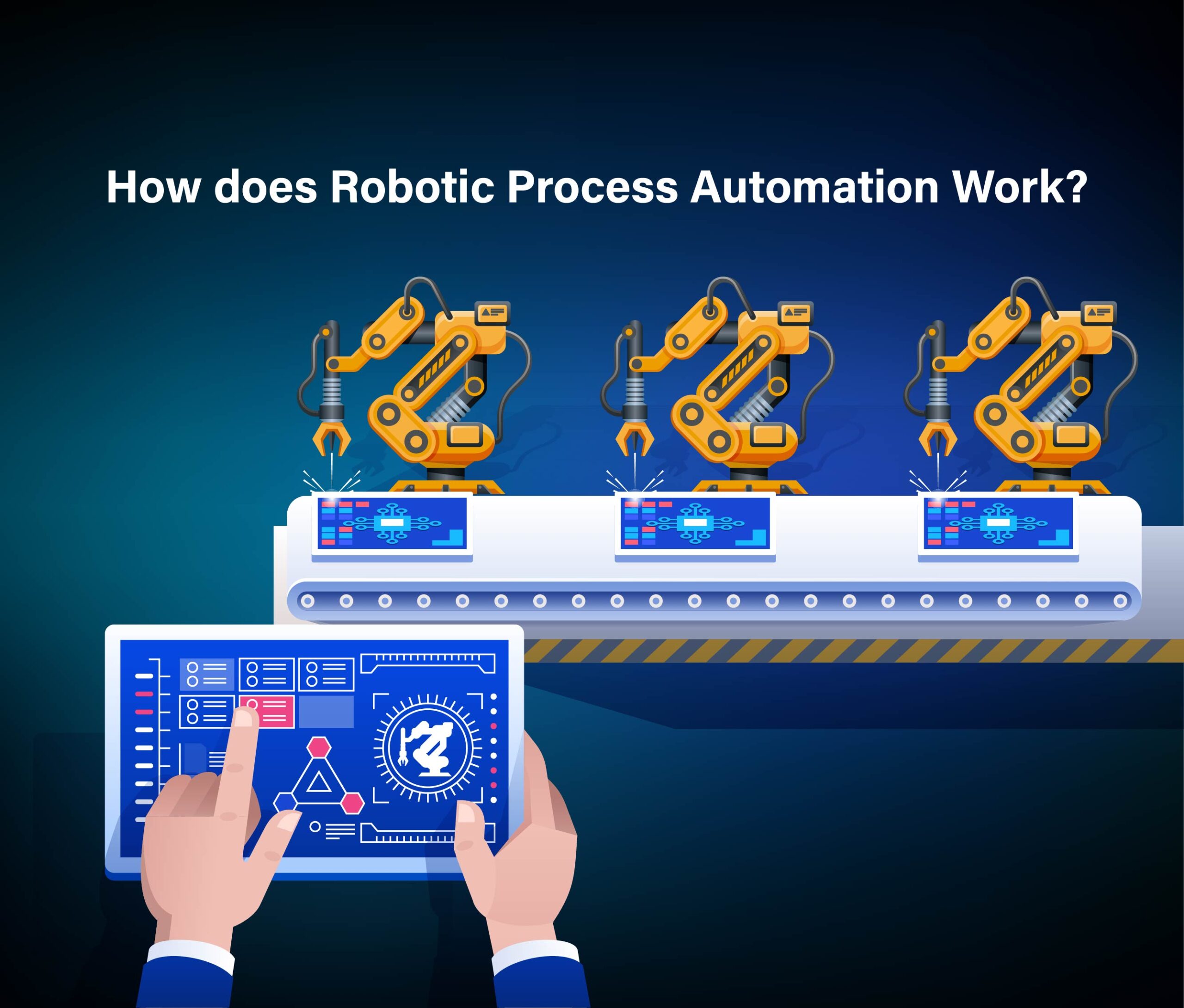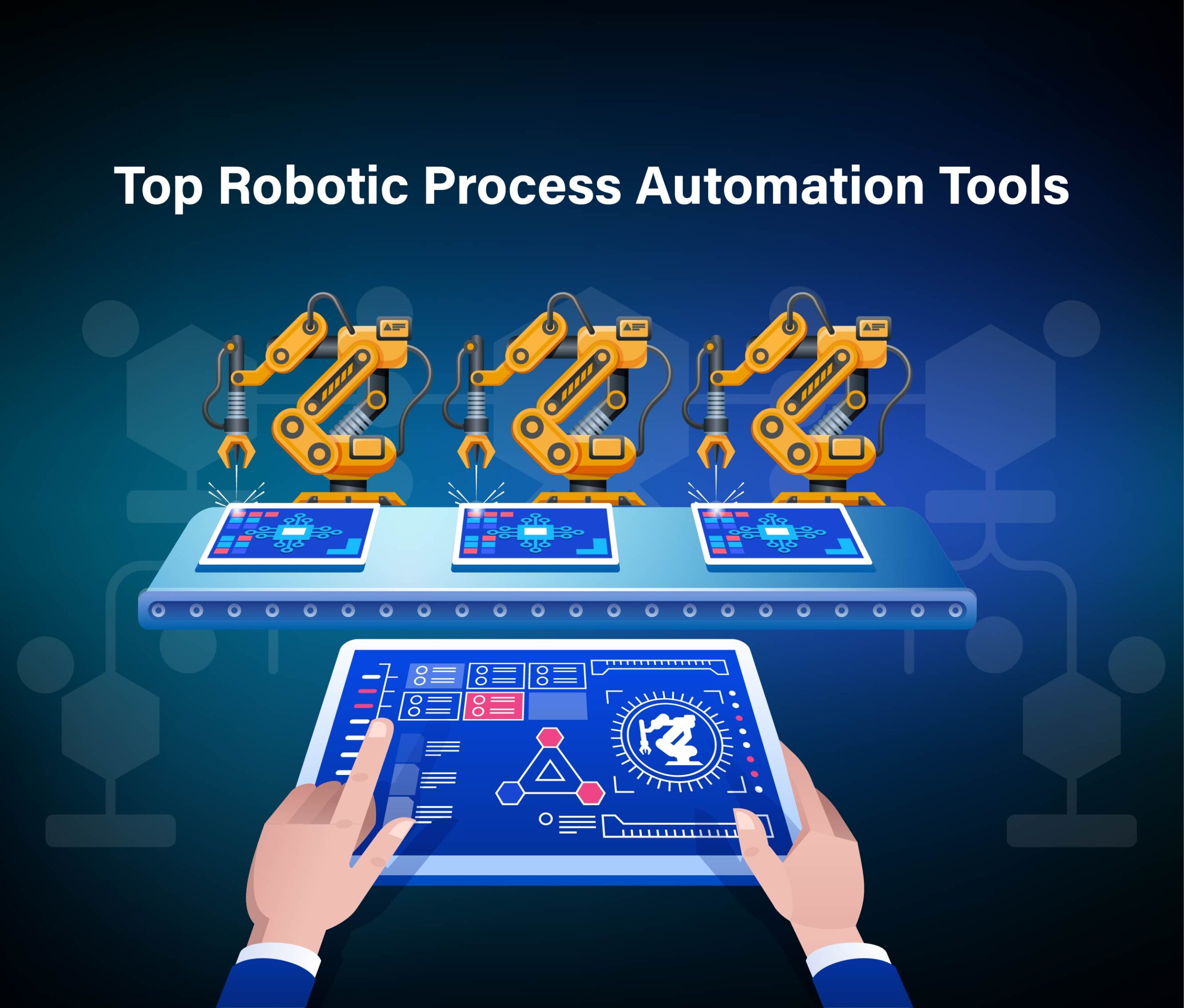In the 1936 film “Modern Times”, Charlie Chaplin used robotic automation to comment on industrialization after the Great Depression. In one scene, a manager tries to improve factory productivity by using a robotic feeding machine on Chaplin, which comically goes awry.
Today, the concept of robotic process automation (RPA) closely resembles Chaplin’s vision, albeit with fewer instances of comical pie-throwing.
With that being said, let’s dive into the world of RPA and explore every aspect of it.
What is Robotic Process Automation?
Robotic process automation (RPA) is a software technology that simplifies the creation, implementation, and supervision of software robots that imitate human activities when interacting with digital systems and software. Similar to humans, these software robots possess the ability to comprehend on-screen content, execute precise keystrokes, navigate through systems, extract and retrieve data, and perform a variety of predefined tasks. However, unlike humans, software robots can complete these tasks at a much quicker pace and with unwavering consistency, without the requirement for breaks or relaxation periods.
How does Robotic Process Automation Work?
 RPA software tools should encompass the following essential features:
RPA software tools should encompass the following essential features:
- Low-code capabilities for constructing automation scripts.
- Seamless integration with enterprise applications.
- Robust orchestration and administration functionalities, including configuration, monitoring, and security.
Automation technologies like RPA excel at accessing information from legacy systems and seamlessly integrating with other applications through front-end interfaces. This enables the automation platform to emulate human workers by executing routine tasks such as logging in and performing copy-paste operations between systems. While back-end connections to databases and enterprise web services also contribute to automation, RPA’s true strength lies in its agile and straightforward front-end integrations.
What are the Benefits of Robotic Process Automation for Businesses?
Robotic process automation (RPA) improves the efficiency of workflows, leading to enhanced profitability, adaptability, and responsiveness for organizations. Additionally, it boosts employee satisfaction, engagement, and productivity by eliminating repetitive and tedious tasks from their daily responsibilities.
RPA offers a noninvasive and speedy solution for driving digital transformation. It is particularly well-suited for streamlining workflows that involve legacy systems without APIs, virtual desktop infrastructures (VDIs), or database access. By implementing RPA, businesses can quickly automate these processes and enhance their digital capabilities.
Here are some of the major benefits of implementing robotic process automation (RPA).
- Rapid Transformation: A notable 63% of global executives recognize RPA as a pivotal element in driving digital evolution.
- Enhanced Compliance: An overwhelming 92% concur that RPA has not only met but surpassed expectations in ensuring superior compliance.
This powerful technology helps:
- Elevate customer service quality.
- Ensure seamless adherence to regulatory and compliance frameworks.
- Significantly expedite processing times.
- Enhance efficiency through digitization and meticulous process auditing.
- Cut costs by automating manual and repetitive tasks.
- Empower employees to achieve higher levels of productivity.
Top Robotic Process Automation Tools
 RPA software operates by imitating human actions and engaging with digital systems in a similar manner to a human worker. By utilizing pre-established guidelines and scripts, RPA aids in the execution of particular tasks, streamlining processes, minimizing human mistakes, and enhancing efficiency. These advantages ultimately result in an enhanced customer experience, diminished operational expenses, and heightened productivity.
RPA software operates by imitating human actions and engaging with digital systems in a similar manner to a human worker. By utilizing pre-established guidelines and scripts, RPA aids in the execution of particular tasks, streamlining processes, minimizing human mistakes, and enhancing efficiency. These advantages ultimately result in an enhanced customer experience, diminished operational expenses, and heightened productivity.
Numerous exceptional RPA tools can be found in the vast realm of automation technology. Some of the leading providers of these tools are:
- Appian
- Blue Prism
- Automation Edge
- Automation Anywhere
- Datamatics
- Cyclone Robotics
- IBM
- EdgeVerve Systems
- Laiye
- HelpSystems
- Kofax
- Kryon
- Microsoft
What to Look for in Robotic Process Automation Software?
Enterprise executives seeking RPA technologies should take into account various factors. These include:
- Scalability: To ensure effective management and scalability, enterprises should opt for RPA platforms that can be administered centrally and expanded through a central control panel, as opposed to deploying and scaling them individually on each desktop.
- Speed: Enterprises should have the capability to swiftly create and evaluate novel automated processes, as well as enhance the efficiency of these robots to operate with speed.
- Reliability: As organizations introduce robots to streamline numerous manual tasks, it is imperative for them to seek out tools that come equipped with integrated monitoring and analytics capabilities. These features will allow them to effectively oversee and assess the well-being and performance of their automated systems.
- Simplicity: Companies should seek out robots equipped with monitoring and analytics capabilities to automate numerous manual tasks. This would allow them to effectively monitor the well-being of their systems.
- Intelligence: The most effective robotic process automation software can assist with straightforward, task-oriented activities, access and modify data from various sources, and leverage advanced learning capabilities to enhance automation even further.
- Enterprise-class: Companies should search for tools that have been specifically designed to offer scalability, reliability, and manageability at an enterprise level.
- Governance: To effectively handle bot security credentials, evaluate potential privacy concerns, and identify any related issues, enterprises should consider examining different security and governance functionalities. This will aid in adopting comprehensive security measures and maintaining proper control over bots.
Final Thoughts
Robotic process automation (RPA) stands as a game-changing force in today’s rapidly evolving business landscape. With the advent of advanced robotic process automation software, organizations are equipped with powerful tools to streamline operations, improve compliance, and enhance customer service.
Robotic process automation services offer tailored solutions, ensuring seamless integration and maximum efficiency. Embracing robotic process automation tools empowers businesses to not only reduce manual workloads but also drive productivity to new heights. As the digital era continues to unfold, harnessing the potential of RPA is imperative for staying competitive and future-proofing operations.





